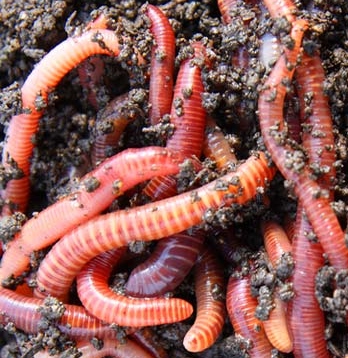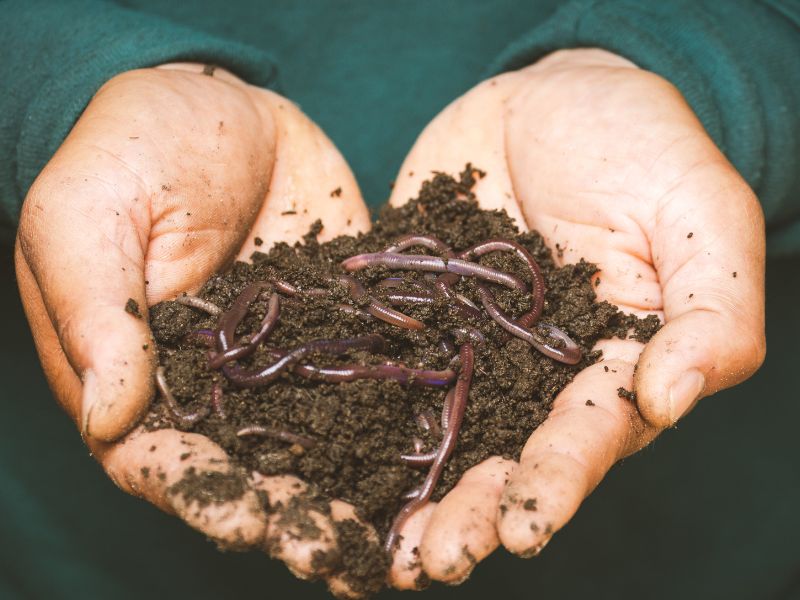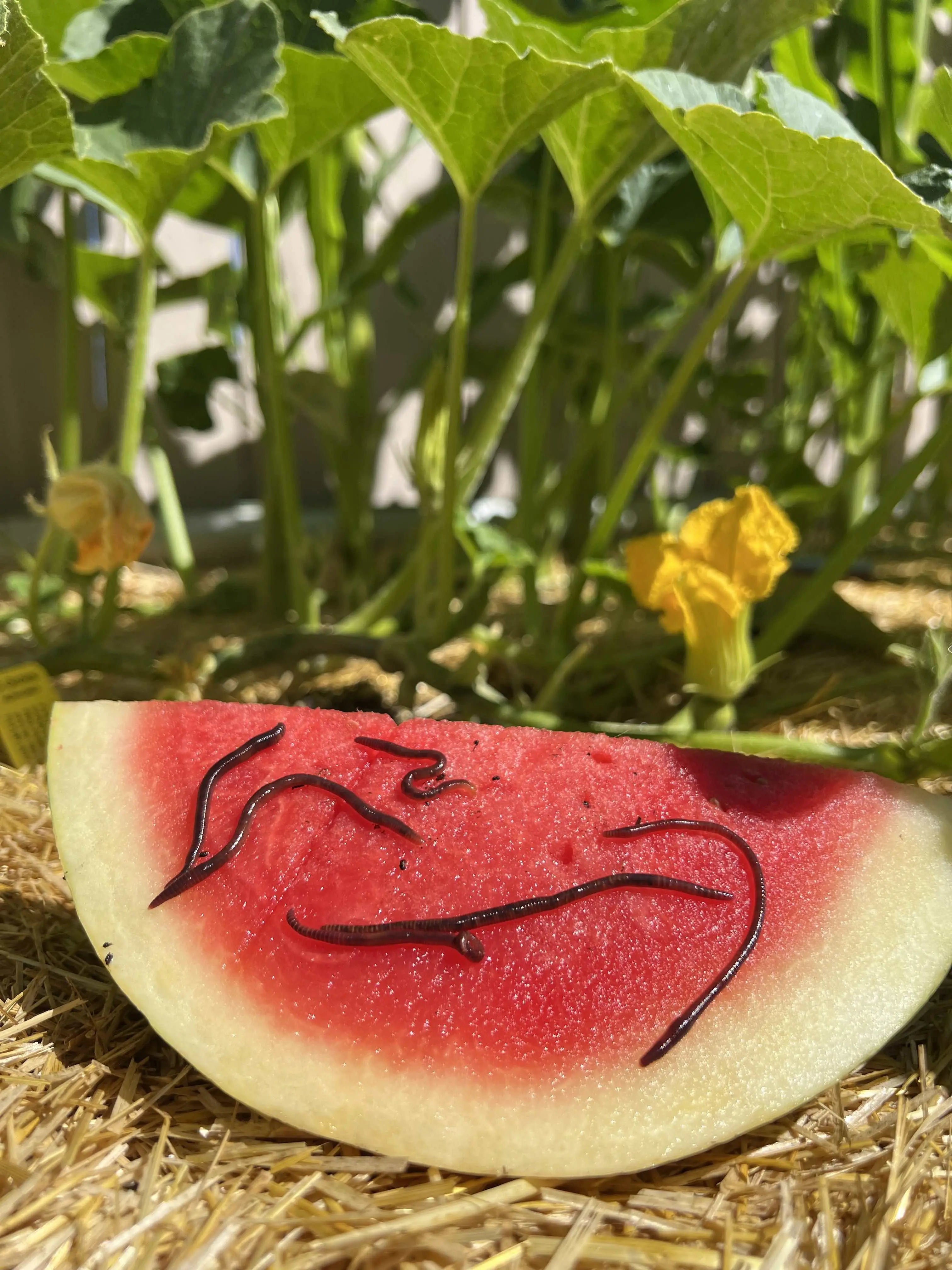Why Red Wiggler Composting is the most effective Option for Eco-Friendly Horticulture
Comprehending the Benefits of Red Wiggler Composting: Just How This Efficient Approach Transforms Organic Waste Into Nutrient-Rich Dirt Amendments
Red Wiggler composting, using the varieties Eisenia fetida, presents a compelling approach to organic waste administration, transforming cooking area scraps and backyard particles into valuable soil changes. This approach not just boosts dirt fertility yet also addresses pressing environmental issues, including garbage dump waste reduction and greenhouse gas discharges.
What Are Red Wigglers?
Red wigglers, clinically called Eisenia fetida, are a varieties of earthworm that play a pivotal role in vermicomposting systems. These worms are characterized by their reddish-brown shade, fractional bodies, and a distinctive capacity to grow in organic-rich environments, making them perfect for composting applications - Red Wiggler Composting. Unlike their garden-dwelling counterparts, red wigglers favor to occupy the top layers of soil, where decomposing matter is bountiful
Typically measuring in between 3 to 4 inches in length, red wigglers have a high reproductive rate, allowing them to multiply rapidly under optimal problems. They have a distinct digestive system that permits them to process organic waste successfully, converting it into nutrient-rich spreadings, which are extremely beneficial for plant development.
Their tolerance to differing wetness levels and temperature level varies even more boosts their utility in vermicomposting setups, making them a preferred choice amongst composting enthusiasts. In addition, red wigglers are cardiovascular microorganisms, which requires a well-aerated composting environment, making sure reliable disintegration. Understanding the organic characteristics and actions of red wigglers is vital for enhancing their use in lasting waste monitoring methods.

Advantages of Vermicomposting
Using the power of vermicomposting deals a wide variety of farming and ecological advantages. It significantly minimizes natural waste in land fills, thus decreasing methane emissions, a powerful greenhouse gas. By diverting food scraps and backyard waste to vermicomposting, we support a more lasting waste administration system.
Furthermore, vermicomposting enhances dirt health and wellness. The spreadings produced by red wigglers are abundant in vital nutrients, microorganisms, and enzymes, enhancing soil framework and fertility. This nutrient-rich modification advertises robust plant development and enhances water retention, lowering the demand for chemical fertilizers.
Additionally, vermicomposting fosters biodiversity in the soil community. The introduction of beneficial bacteria from worm castings aids in illness reductions and nutrient biking, producing a much healthier atmosphere for plants.
Economically, vermicomposting reduces the prices related to chemical inputs and garbage disposal. Garden enthusiasts and farmers can grow top quality fruit and vegetables at reduced expenditures, contributing to food security and sustainability.
Just How to Start Composting
Beginning a composting venture can be a satisfying and uncomplicated process. This will certainly help maintain a balanced temperature level, crucial for the composting procedure.
Gather organic products such as cooking area scraps, lawn waste, and shredded paper. Go for a balanced mix of 'green' products, high in nitrogen (e.g., fruit scraps, coffee premises), and 'brown' materials, rich in carbon (e.g., dried out fallen leaves, cardboard) A ratio of roughly 2:1 environment-friendly to brown products is optimal.
Begin layering your products, making certain adequate air flow by turning the stack on a regular basis. This advertises cardiovascular disintegration, speeding up and decreasing odors up the process. Monitor wetness degrees; the compost should seem like a moist my link sponge yet not excessively damp.
Nutrient Profile of Vermicompost
Composting, specifically with red wigglers, generates a nutrient-rich product referred to as vermicompost. This organic change is differentiated by its high concentration of crucial nutrients, making it a vital resource for horticulture and agriculture. Vermicompost normally contains raised degrees of macronutrients such as phosphorus, potassium, and nitrogen, which are vital for plant development. In addition, it gives trace elements like magnesium, iron, and calcium, cultivating robust plant development and enhancing dirt wellness.
The microbial activity present in vermicompost further enriches its account, presenting beneficial microorganisms and fungi that promote vitamins and mineral availability read what he said and uptake in plants. This biological element aids in suppressing plant diseases and boosting dirt framework, resulting in boosted water retention and oygenation.

Environmental Influence of Composting
The environmental effect of composting, especially through using red wigglers, is extensive and diverse. This method dramatically lowers the volume of organic waste sent out to landfills, which in turn lessens greenhouse gas discharges, specifically methane-- a powerful contributor to environment adjustment. By diverting natural materials from garbage dumps, red wiggler composting not only assists mitigate ecological degradation but also promotes lasting waste management practices.

Additionally, composting adds to carbon sequestration, as the procedure captures carbon dioxide from the atmosphere and shops it in the soil. This all-natural process help in combating environment adjustment while enhancing the soil - Red Wiggler Composting. On the whole, red wiggler composting presents a sensible, green solution for waste management and environmental sustainability, promoting much healthier ecological communities and an extra sustainable future
Final Thought
In final thought, Red Wiggler composting serves as an effective approach for transforming natural waste right into beneficial dirt modifications. The process not just enhances dirt fertility description and structure yet likewise mitigates ecological concerns connected with waste disposal.
Red Wiggler composting, employing the varieties Eisenia fetida, provides a compelling approach to natural waste management, converting cooking area scraps and lawn particles right into important dirt amendments. Unlike their garden-dwelling counterparts, red wigglers choose to inhabit the upper layers of soil, where decomposing issue is plentiful.
The castings produced by red wigglers are rich in crucial nutrients, germs, and enzymes, enhancing soil structure and fertility. The nutrient-rich by-products of red wiggler activity boost dirt framework, boost water retention, and advertise biodiversity within the soil community.In conclusion, Red Wiggler composting offers as a reliable technique for converting organic waste into beneficial dirt modifications.